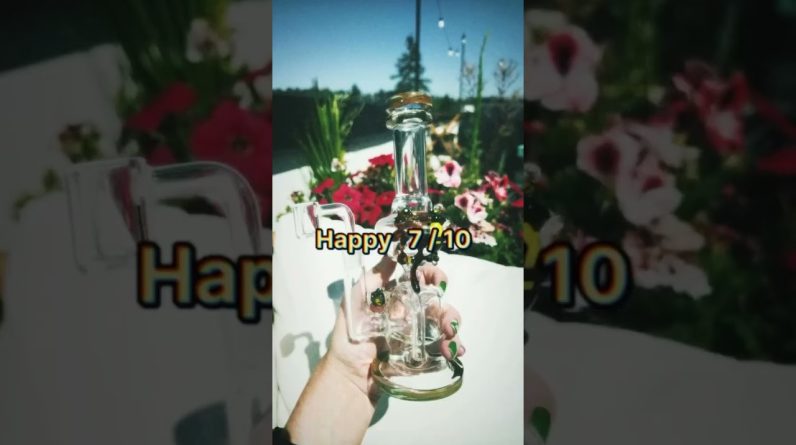
Cannabis cultivation necessitates meticulous attention to detail and a major commitment of time, effort, and money. Controlling variables is the game’s name when it comes to cultivating cannabis.
Consider it a scientific experiment: various aspects might influence the outcome of your grow, and to achieve the finest output, you must dial in as many of them as possible.
This includes controlling things like:
- Lighting
- Airflow
- Temperature
- Humidity
Genetics
Great cannabis begins with great seeds. There are a lot of alternatives, but for starters, you should choose a Feminized and Autoflower genetic because they are virtually always female, and scheduling your lighting cycles is much easier. You don’t want to develop male plants since they won’t generate buds.
There are several cannabis seed banks where you may receive high-quality genetics delivered straight to your home.
Lighting
Your plants require light to survive. Plants need sufficient illumination to grow, as everyone with houseplants knows. LED illumination is the way to go these days since it allows for a 24-hour photoperiod plant.
There are several alternatives available, and it might be challenging to select the best one for your needs. Find the finest LED grow lights for your tent for growing plants by taking into account the size of your weed grow (how big is your tent, and how many crops are you growing?).
Among other things, power consumption and light spectrum — the full spectrum is preferable to CBD – are essential. Outdoors, your weed plants obtain lighting from the sun.
Airflow
Indoor plants require a certain level of ventilation and air movement and proper lighting, fertilizers, and water. You can accomplish this by installing fans or an exhaust system.
At first glance, air circulation may appear unimportant, and it may be towards the bottom of many growers’ priority lists when it comes to their setup. If they discover how effective a simple ventilation system can be for crop health, that will change.
Airflow inside the growing environment helps simulate outdoor and natural settings and performs various functions, including protecting valuable plants from external dangers.
Humidity and Temperature
The ideal humidity for growing weed and temperature for crops is definitely possible. Crops like temperatures ranging from 20 to 25 degrees Celsius, while crops require temperatures ranging from 18 to 20 degrees Celsius during flowering.
They can live in both low and high temperatures, but it is critical to regulating the temperature to ensure optimal development and potency and to protect crops from molds and mildew.
Training
Pruning, topping, and LST (low-stress training) are all plant training procedures that might be useful. If you cultivate indoors, these approaches can help you maximize available space (i.e., more plants per square meter) for higher harvests.
Because plant training allows more light to reach more budding sites, you should get larger and fatter buds.

Growth Stages
Germination
Germinating cannabis seeds is a simple procedure — the goal of this stage of your grow is to get your seeds sprouting so that you may transplant them to your growth media. There are several techniques for germinating seeds:
- In the water: Place your seeds in a glass of filtered water and change the water every other day until they sprout.
- Paper towel method: Soak paper towels in water, then nestle your seeds between folded layers of wet paper towels. Remoisten as needed, and check on them once a day — once sprouts appear, you’re good to go. Also, this is the commonly used germination technique in the cannabis world.
- In soil: This is the most basic way – place your seeds in some soil, wet, and wait for them to sprout.
Vegetative Growth Phase
The vegetative stage of cannabis growth is when your plant grows its primary plant mass. We’re establishing the groundwork for the huge colas we’re hoping to produce during the flowering period.
At this point, you may anticipate noticing larger stems and trunks and an explosion of leaves all over your plant. In a nutshell, you want to perform the following with your plant during vegetation:
- Allow for 18-24 hours of bright light every day.
- Add water when the soil is dry to the touch or the bucket or pot feels lighter than usual.
- Provide nutrients to the plants.
You’ll repeat this method until your plant is approximately half the size you want it to be. You’ll discern whether your plants are male or female by weed sexing during the vegetative stage.
If they’re male, remove them out of the growing area right once — only females develop buds, and males can pollinate female plants, causing seeds to form and lowering the potency of your final output.
Flowering Phase
If you’re using photoperiod seeds, as you almost certainly are, you’ll need to change the lighting cycle to get your plants to blossom. As the name indicates, flowering is the stage at which your cannabis plants begin to produce flowers – and isn’t that what we’re all here for?
If you use Autoflower seeds, there is no need to alter the illumination because they will enter the flowering stage independently. You should begin feeding your plants with the blooming nutrients you purchased and reduce the lighting schedule from 18-24 hours to 12 hours per day.
This mirrors the natural light cycle that occurs when the seasons change towards fall, and it is what signals to your plants that it is time to bloom.
Harvesting Period
It’s time to harvest your cannabis when the flowering period is through! The most important thing to check here is trichome coloring. While there are other indicators, this is the most reliable way to tell when your plants are ready to harvest.
Trichomes are little resin glands that develop all over your buds and even some leaves, and they’re one of your plants’ primary suppliers of cannabinoids.
A jeweler’s loupe or trichome microscope is required to inspect them for coloring. Examine your trichomes closely; you’ll notice that they begin clear, then turn milky-white, and eventually amber as they mature.
Drying and Curing
Drying pot is the procedure of drying the plants to minimize their moisture content, after which the cannabis will be safe to ingest by smoking, vaporizing, or converting into other products such as oil, edibles, and more.
Curing weed takes place after drying and is an optional—but highly recommended—additional step. Curing yields more powerful and nuanced cannabis than merely drying it.
Fortunately, both procedures may be carried out using basic setups and low-cost equipment. After investing in a simple drying and curing setup, you may reuse it crop after harvest.
The fundamental purpose of cannabis drying is to lower the moisture content of your plants to approximately 10-15% so that they burn or evaporate correctly.
Source: https://topgrows.com/cannabis-growing-tips-beginners/





